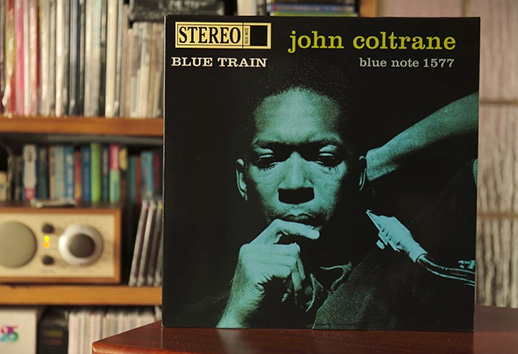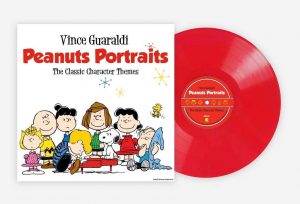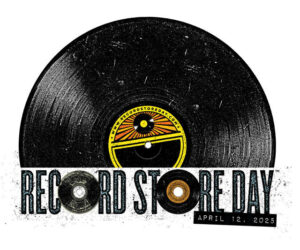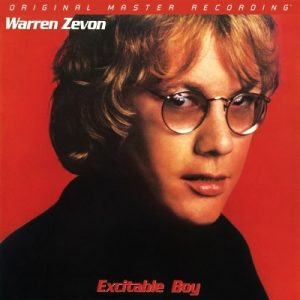Everything you want to know about behind-the-scenes of the recording process of Blue Train’s and which of the digital reissues of this jazz masterpiece are the best.
On September 15th 1957, John Coltrane walked into Rudy Van Gelder's studio in Hackensack and recorded a masterpiece album: Blue Train. It was the only album by a saxophone leader recorded for Blue Note Records.
To celebrate the 65th anniversary of Blue Train, Blue Note presents it in the latest Kevin Gray's remaster and Joe Harley's production, both in mono and stereo versions. For the first time ever, we got a version with seven bonus tracks, none of which had previously been released on vinyl, and four of them not at all, in any format. This version is officially titled Blue Train: The Complete Masters. LP and CD versions hit the stores—the former as single and double disc releases. Also part of this edition are previously unpublished photos by Francis Wolff and an essay by Ashley Kahn, an expert on Coltrane lore.
The number of Blue Train reissues is dizzying. The Discogs portal mentions as many as 285 versions. However, when we read the information on the covers and in the booklets, when we look for information about them, it turns out that we are dealing with probably only nine remasters and thirteen most important CD and SACD releases. All others are based on the following ones:
- 1984 digital, Japan stereo
- 1985 analogue stereo
- 1991 analogue, Mobile Fidelity, Gold-CD stereo
- 1996 digital, Japan, PCM 20/88,2 stereo
- 1997 digital, Ron McMaster, PCM 20/88,2 | SBM stereo
- 1999 digital, Rudy Van Gelder, PCM 24/96 mono
- 2003 digital Rudy Van Gelder: copy controlled disc + SACD mono
- 2008 analogue, Analogue Productions, Kevin Gray & Steve Hoffman, DSD: SACD stereo
- 2015 digital, Esoteric, PCM 24/192 DSD: SACD stereo
- 2016 digital PCM 24/192, Platinum SHM-CD, SHM-CD, UHQCD (2017) mono
- 2017 digital, DSD, SHM-SACD stereo
- 2018 digital, DSD PCM 24/176,4: UHQCD
- 2022 analogue, DSD: SHM-SACD, UHQCD, CD mono + stereo
Sound
In previous parts devoted to the reissues of the Blue Train album, we discussed the history of its creation and recording techniques used by Rudy Van Gelder (HERE) and all the most important editions of this title on digital discs (HERE).
It is not difficult to realize that this short, because it lasts only forty-one minutes and twenty-five seconds—not counting the pauses, because these are different in each edition—material consisted of an incredibly many elements. The experience of the musicians, the intuition of the producers, the skills of the recording engineer and those preparing subsequent remasters, and even the mastery of Reid Miles, responsible for the cover design, and Francis Wolff, the photographer—all this in some amazing way converged in one product, resulting in a timeless cultural artifact.
Why are we looking at reissues at all? For an audiophile, the matter is simple: because each of them brings a different sound. We believe that the sonic expression of a work—that is, "what it sounds like"—is its irreducible component. After all, we are not talking about notation, but about its implementation—the only one, unrepeatable, enchanted in the analog tape on which it was recorded. One that will never happen again. The final shape was given by the choices of Van Gelder on the one hand and those responsible for the remasters on the other.
For laymen, or simply music lovers and music fans who do not pay attention to sound quality, this may seem like a far-fetched interpretation. The reality, however, is exactly this—contemporary trends in research on recorded music agree on this: the recording studio is another musical instrument and as such must be treated as part of the creative process. And if so, the other side of the "glass," i.e. the act of reproduction, cannot be treated differently. Both the medium and the system in which it is played are also "instruments" and they too are subject to the same evaluation criteria.
Which turned out very well in this last part of the article. Listening to subsequent digital versions of Coltrane's album, I listened to slightly different performances. Changes in timbre, subjectively perceptible tempo, dynamics, soundstage, and even sound structure—all this meant that although it was the same material in terms of notation, its physical realization was different. That's why we keep remastering, and that's why labels regularly try to capture what's on the master tape. Our dream is to stand as close as possible to the "act of creation."
So let me invite you to take this journey with me and at the same time I encourage you to try it yourself. I guarantee amazing experiences, discoveries and surprises.
1985 COMPACT DISC stereo - Blue Note CDP 7 46095 2
25 Best Albums Blue Note series
The first digital edition released outside of Japan has a pleasant, almost warm sound. In general, it resembles the sound of gold CDs. It seems so due to the lack of aggressive compression, often abused later, and not due to warming of the sound. That is why we perceive its sound—ultimately—as open and sonorous. It does not contain many low frequencies, because it is based primarily on the mid and higher part of the band. However, the long reverberation imposed on the wind instruments is clearly audible, and the extinction of it is nice, because it has not been muffled.
The space is quite good, although it is not the strongest point of the release. A very short entry of the percussion solo starting "Locomotion" shows us where it is "positioned" in the room, because the instrument can be heard further than the saxophone and the trumpet. The piano is clear and selective. It was located in the panorama a bit closer to the center of the stage than the saxophone, moved far to the left. This is where the trumpet and trombone also appear. The percussion occupies an area slightly to the right, but is not pushed to the edge of the stage. Everything takes place behind the line connecting the speakers and there is no feeling of "tangibility" of the sound.
Taking all this into account, however, it must be said that this is a surprisingly good release, because it is even, clean, warm and selective. Its biggest advantage is the lack of internal "squeezing" and straining.
1991 GOLD CD stereo
Mobile Fidelity Sound Lab UDCD 547 Original Master Recording series
Released in 1991, on a gold disc by Mobile Fidelity, the version was the first "regular" remaster to be released on a digital disc; I treat the first two releases as digital reissues. It was also an analog remaster. Let me remind you that this specialist had a fully analog tube circuit with modified tape recorder electronics, which they used to prepare both LPs and CDs.
The sound of this version is darker and deeper than the first release from 1985. First of all, the double bass sounds fuller, previously quite light and positioned clearly at the back, behind the other instruments. However, the volume of wind instruments did not change. They are slightly withdrawn and not entirely tangible. Although their sound is fuller than before, the attack is slightly rounded and smoothed.
This is, by the way, a version with a rather calm character, calmer than the reissue with which we started this review. Although the resolution here is higher than in the 1995 version, the whole, it seems to me, is emotionally muted. The first release had more energy and a stronger punch, and yet it was not bright. Perhaps MoFi decided on such a tonal balance to minimize the problems of the then CD players, which often sounded too light and too bright.
And one more thing—the instruments in this version are closer to us, closer to the line connecting the speakers. The long reverberation we get due to Van Gelder using the EMT reverb board is shortened here. Typically, this type of effect is achieved by slightly compressing the signal. Whether that was the case here, I don't know. But the effect is just that.
1998 COMPACT DISC mono
Toshiba –EMI Limited TOCJ-9005 Rudy Van Gelder Remaster series
In memory of Alfred Lion
The first remaster of the material made personally by Rudy Van Gelder brings a big, full and dynamic sound. The mono version of this material is mixed differently than the stereo version. Solo instruments came to the fore, be it Coltrane's saxophone, Lee Morgan's trumpet, or Curtis Fuller's trombone. The drums, present in the stereo version in the right channel, are positioned behind all the instruments here. It is muted in terms of color and does not have the same power of impact as in stereo.
But the main instruments are strong and saturated. A lot of long reverberation was applied to the instruments. However, it is not a reverberation that would muffle the attack. Because the latter is instant and full. This allows the sound to be well placed on axis, with clearly differentiated planes. It is important that the instruments have a large volume, so it is a full sound, not limited to the space between the speakers. Instruments fill the space between them.
On the other hand, the piano, not as open as in Van Gelder's later Hackensack recordings, does not have a clear attack. When he enters with a solo at 7:12 of the title track, the percussion standing in the studio next to him is audible louder. The piano sound is rather smooth and there are not too many harmonics. I assume that the engineer wanted the microphones of this instrument not to "pick up" too much percussion, so he "closed" their highest band with tone correction.
It's a very good version though. Really enjoyable and convincing. I missed a bit of filling in the lower midrange, which—anticipating events—is characteristic of the latest release. Other than that, though, it's the best-sounding CD ever released.
2003 Copy Controlled disc mono
Blue Note 7243 5 91721 2 5 Rudy Van Gelder Edition series
THE 2001 VERSION brings a remaster made personally by Rudy Van Gelder in 24-bit resolution, which is important. The important change is that is monophonic. And that's about all that can be said about it.
Encoding CDs with anti-piracy code produced a sound with insufficient definition and quite shrill. The cymbals have no decay, and are characterized primarily by a bright hit and a strong attack. The double bass has low clarity, and the other instruments have not much volume. The perspective is flat and shallow, even though the sound is about 2 dB louder than on previous releases, suggesting quite a lot of compression. There's no need to keep pounding on this version.
2003 Super Audio CD mono
Blue Note 7243 5 41757 2 5
Released in the same year as the CCD disc, the SACD version probably uses the same remaster—in both cases it is signed by Van Gelder. Interestingly, the SACD was not released in the "Rudy Van Gelder Edition" series, but simply as a SACD. An interesting fact—the CD layer is not encoded with the anti-piracy protection, hence the Compact Disc logo on the cover. And the second curiosity—on the cover of this release there is an inscription "stereo", despite the fact that it is a mono disc.
It is also a mono remaster and has a similar tonal balance to what I heard in the CCD version. It's quite bright, strong and loud. Despite the fact that I listened to the "high resolution" layer, implicitly converted to DSD directly from the 24-bit master, I did not hear any particular difference in terms of resolution.
It seemed to me that the sound definition was better, and the double bass had a more contoured attack, but the changes in favor were not particularly large. If anything, I'd say that the SACD version sounds even higher and has more filled bottom end than the CCD version. In my opinion, both the CCD and SACD from 2003 are a step backwards compared to previous releases.
2008 Super Audio CD stereo
Analogue Productions CBNJ 81577 SA The Blue Note Reissues series
The American version by Analogue Productions, remastered and produced by Kevin Gray and Steve Hoffman, was the first Blue Train SACD with stereo material. The first thing we notice when listening to it is the lower average volume level. This usually indicates lower compression and therefore higher dynamic range.
You don't hear it at first. Gray and Hoffman modeled the tonality of this version so that there was not too much bright treble in it, which was a clear break with the line proposed by Van Gelder in 1998 and repeated in subsequent CD and SACD releases. The Analogue Productions release is much more atmospheric and smoother.
I know, it's sacrilege, after all, Rudy was present when the material was recorded and he is the expert in this field. However, it seems to me that striving to presents at home what was happening in the studio or what is on the tape with 1:1 accuracy is not possible. Compromises are needed, which is an art in itself. And the compromises proposed by these two are excellent.
The sound of this album is therefore rich and dense. It focuses on adding weight to the bass, but not as much as in the latest release. The soundstage created in front of us is quite dense, even though it is a classic stereo recording of the time—the mixing consoles had only three positions of the panorama—left side, center and right side. However, due to the large volume of sounds and "leaks" between the microphones, it seems that a real band is playing in front of us, and not that the sound comes from specific points.
The 2022 version is about 2 dB louder, making the instruments seem closer and more tangible. However, the Analogue Productions disc retains a longer and clearer reverberation, in a form invented by Van Gelder. As we will soon see, Kevin Gray decided on a slightly different presentation, i.e. closer to us and more "here and now." However, if we were thinking about the definitive versions of this album, apart from the latest one, which is simply the best, this one, by Analogue Productions, would be on my shelf, because it balances perfectly between what Van Gelder and what can be obtained from the tape "master."
2015 Super Audio CD stereo
Esoteric ESSB-90123 Master Sound Works series
Box: 6 Great Jazz, "MasterSound Works," Blue Note/Esoteric (2015)
Material from 24/192 transfer, remastered in DSD, is one of the best we've received so far. It has the sonority of the original release and a nice filling of the Mobile Fidelity version. The cymbals are strong and selective in it, which could resemble the 2003 version. But it does not. This is a much more resolving and nuanced sound.
There is breath in it, but there is also a close perspective. The instruments are relatively close to us, but they also have a large background of reverbs. These were more marked in the first release, and here they are slightly masked by a stronger direct sound. The opening drum solo in "Locomotion" is dynamic, expressive, and the instrument is closer to us than in previous editions. There are simply more sounds on this album than in all previous releases.
The average signal level is higher in this transfer than in the versions of Analogue Productions from 2008 and Blue Note from 2022 by 6 and 4 dB, respectively, which is quite a lot. The Esoteric producers focused on expression and dynamics here, without brightening the signal. In this respect, it resembles what Van Gelder proposed in 1998 and what was on the SACD with this material from 2017, released on SHM-SACD. It's a similar way of thinking about sound in its natural spontaneity and expression. The timbres may not be as refined as in the Analogue Productions transfer, but it does not mean that it is bad—it is just more "direct."
The SHM-SACD version released two years later, has a higher set tonal balance and is not as saturated. Therefore, the Esoteric remaster appears to be a very successful attempt to return to the original intention of Rudy Van Gelder, but with better dynamics and nicer timbres, especially when it comes to the extremes of the frequency range.
2016 Platinum SHM-CD mono
Blue Note /Universal Classics & Jazz (Japan) UCCU-40021 Premium Papersleeve series
Prepared in 2016, the new remaster of Blue Train is a return to what I heard in the original release from 1985, and partly also to the Mobile Fidelity version from 1991. It's much more balanced and its resolution is much higher.
The sound is not as full, as in the "gold" version, but because the cymbals are less "emphasized" and more in the back, and the individual instruments come to the fore. Even when the trumpet is playing hard, it's not shrill, and it "sits" well in the mix. The double bass is not particularly strong, but it has very good selectivity.
At first glance, the dynamics is not too high, but this is only an appearance. It can be heard as if in this case the compression was not very high. Therefore, it is enough to turn up the music a little to get something much better than on many previous versions. The attack of the cymbals is a bit more biting than on the stereo versions, but this is probably a special feature of the mono master, not a derivative of the remaster. This is a really nice mono version.
2017 SHM-SACD stereo
Blue Note/ Universal Classics & Jazz (Japan) UCGQ-9023 Single Layer SHM-SACD
The SHM-SACD version has a tonal balance similar to what I heard with the first RVG remaster from 1998. So it is rather bright, dynamic and strong. The main difference compared to almost all previous releases is better differentiation of dynamics and placement of instruments on the stage. When the double bass, at the beginning of the third minute of the title piece, starts a fast procession, it can be heard in a perfectly legible way. Previous releases blurred this a bit.
Also the lowest bass is better defined and there is more of it. This can be heard through the stronger presence of the instruments, but above all through the clearer presence of the so-called "pops," i.e. a slight overdrive of the microphone diaphragm through the frequency range lying in the lower midrange. We perceive them as if someone added a low hit to the sound for a moment.
It's much more dynamic than before. The SACD version from 2015 was quite good in this respect, but what you hear here is much better. So is the resolution. This material was mixed to stereo on the fly, by opening and closing channels with individual microphones. You can hear it as if an additional window was opening from the left, then the right side during the performance. This shifts the weight of the stage one way or the other. This version demonstrates this technique best yet. This is a very reliable, precise and resolving edition.
2022 SHM-SACD stereo/mono
Blue Note/Universal Music Company (Japan) UCGQ-9030 (stereo)
Blue Note/Universal Music Company (Japan) UCGQ-9031 (mono)
The SHM-SACD release of 2017 had a volume level lower by about 3 dB compared to earlier releases. This suggested a more economical use of the compressor. The latest version retains the same level. This time, however, the weight of the midrange and upper bass is immediately noticeable. This is the lowest timbre version, not counting the one from Esoteric. However, the former was also more closed, and the new one is more open, a bit like Rudy Van Gelder's remaster from 1998.
To tell the truth, I also have the impression that the soundstage, previously with instruments spread out over the channels, here has been brought slightly towards the center. This resulted in more tangible, more natural sound sources. This is, in general, a very dense, physiological sound. Saturated, free, dynamic, but above all tangible. Previously, only the best mono versions could do this, and now we have it in stereo as well.
The monophonic version has a very similar sound. Probably for the first time mono and stereo sound have similar characteristics, such as: saturation, richness, lack of brightness. This version shows strong, large sources, so characteristic of a monophonic tape. Yet they are not pushed forward. It seems as if by less compression some space was given to the events from Van Gelder's studio.
Both new transfers are excellent. They are also the best in the history of releases of this title so far. They rehabilitated the double bass, which finally has a natural, real bass. Also the timbre of wind instruments is lower and more velvety. Although it seems that the sound here is less tangible, in fact only now we have the impression that we are listening to a real performance. Previously, it sounded more "studio-like," with a more "made" sound. It is great to listen to, in both versions—monophonic and stereophonic.
Summary
Discussing the cultural "icon," no doubts John Coltrane's Blue Train is one, is a risky task. There are countless studies, articles, reviews, and interviews in which authors try to give us their point of view and convince us to share it. But there is nothing as exciting as taking up the subject yourself and verifying it all. Only then can one say that "I know something."
I hope that you have walked this path together with me, together—because that is what I meant in the end. The easiest way would be to collect a few, maybe a dozen or so discs, listen to them and come to your own conclusion. However, that would not be entirely fair. Do you remember what I wrote at the beginning, i.e. about the unique status of the type of release? So, since it is part of the artistic expression of the work, it's hard to condemn anything, ultimately we can say that there will be people willing to listen to a sonic expression that we don't like.
Wherever possible, I tried to avoid unambiguous opinions. Sometimes, however, I had to be firm, like with the CCD or SACD versions based on the same remaster—they seem to me the worse ones. Also the SHM-SACD release from 2017 was, in the end, a bit tiring. On the other hand, if I had to choose the version I would like to have today and it was the only one, it would be the latest release, both in mono and stereo. It is perfectly balanced tonally and just very nice.
However, if you would like to look at this material from a different perspective, I recommend the Japanese edition in the form of a mini LP from 1998, pressed in Japan by Toshiba-EMI, and the analog remaster of Analogue Production, which was released on SACD. There are other interesting versions, but compared to these they are less convincing.
Thank you for taking the time to read it and once again let me encourage you to do your own research.
Selected reviews
Blue Train, John Coltrane, JAZZPRESS.pl
John Coltrane, Blue Train, BESTOFJAZZ.org
Richard Capeless, Vinyl Spotlight: John Coltrane, Blue Train (Blue Note 1577) West 63rd "INC/R" Pressing, "Deep Groove Mono," DGMONO.com .
Marek Dusza, John Coltrane. Blue Train. The Complete Masters, AUDIO.com.pl
Alan McIntosh, John Coltrane Blue Train Reel To Reel Review, HIFIPIG.com
Mark Schlack, John Coltrane: Blue Train, ALLABOUTJAZZ.com
Mark Smotroff, Outstanding Blue Note Tone Poet Series Reissues of John Coltrane’s Eternal Jazz Classic Blue Train in Separate 180g 1LP Mono and 180g 2LP Stereo Editions Beg the Question: Do You Get One or Both Versions?, ANALOGPLANET.com
Record label: BLUE NOTE RECORDS
text WOJCIECH PACUŁA
translation Marek Dyba
images High Fidelity




























































